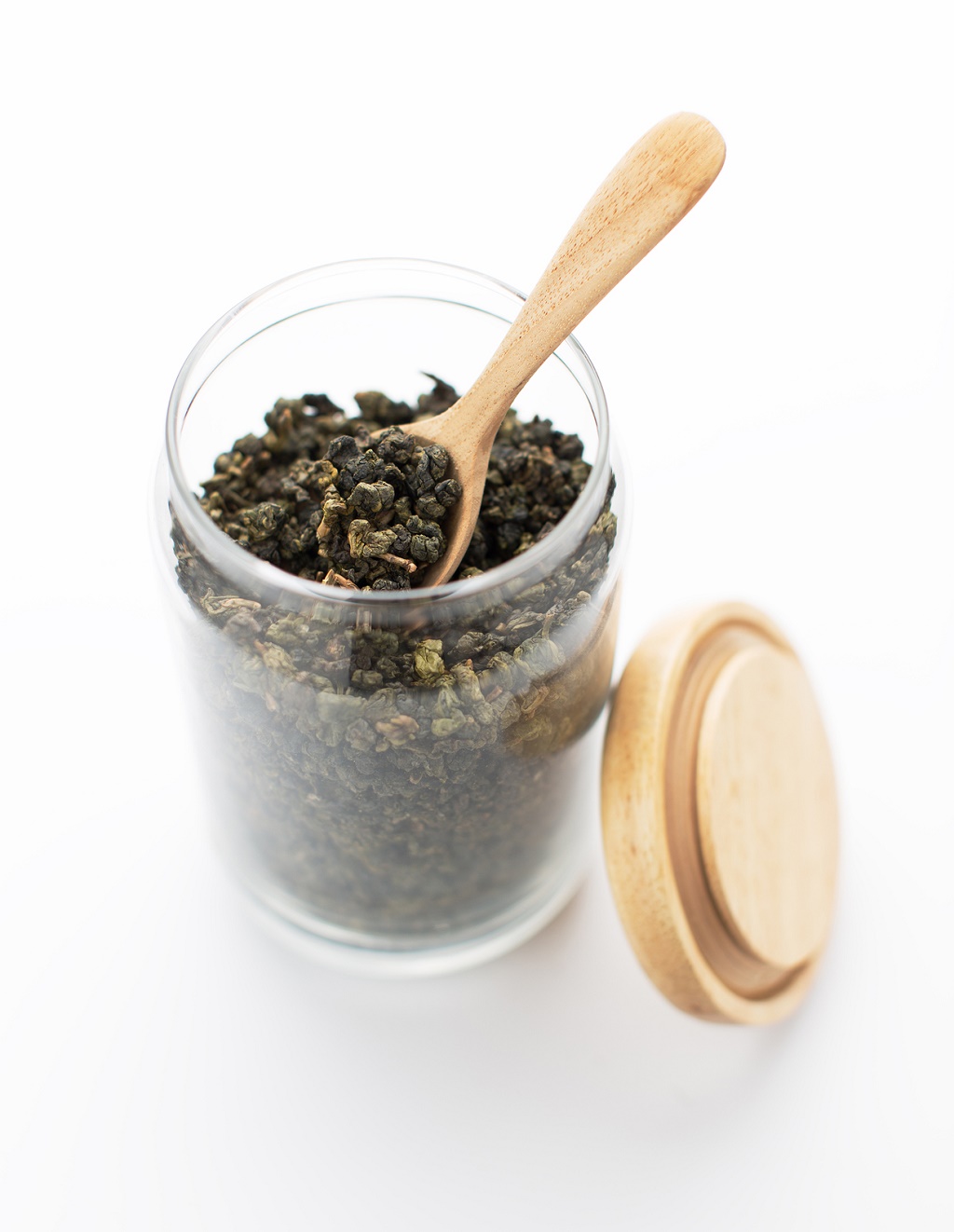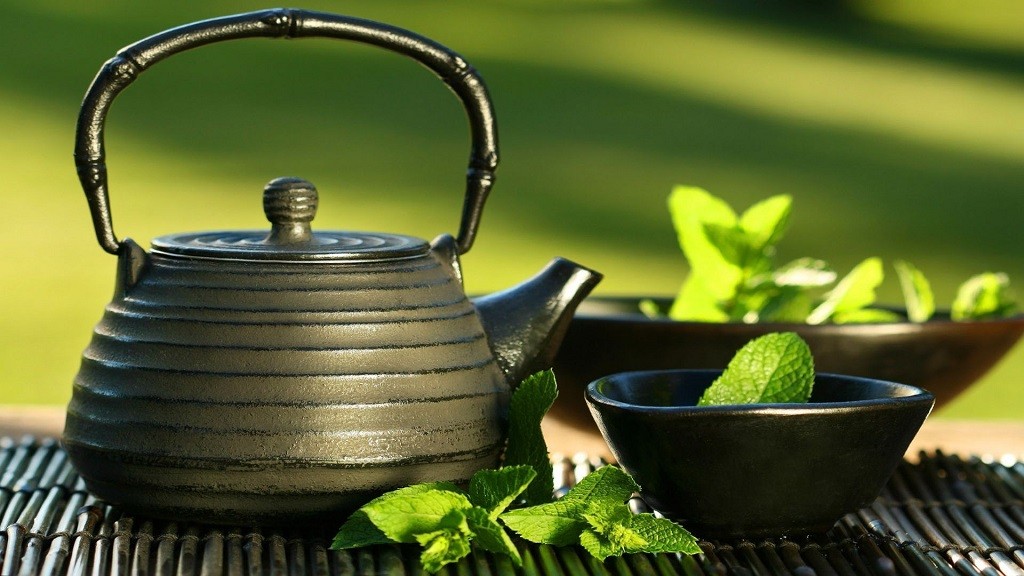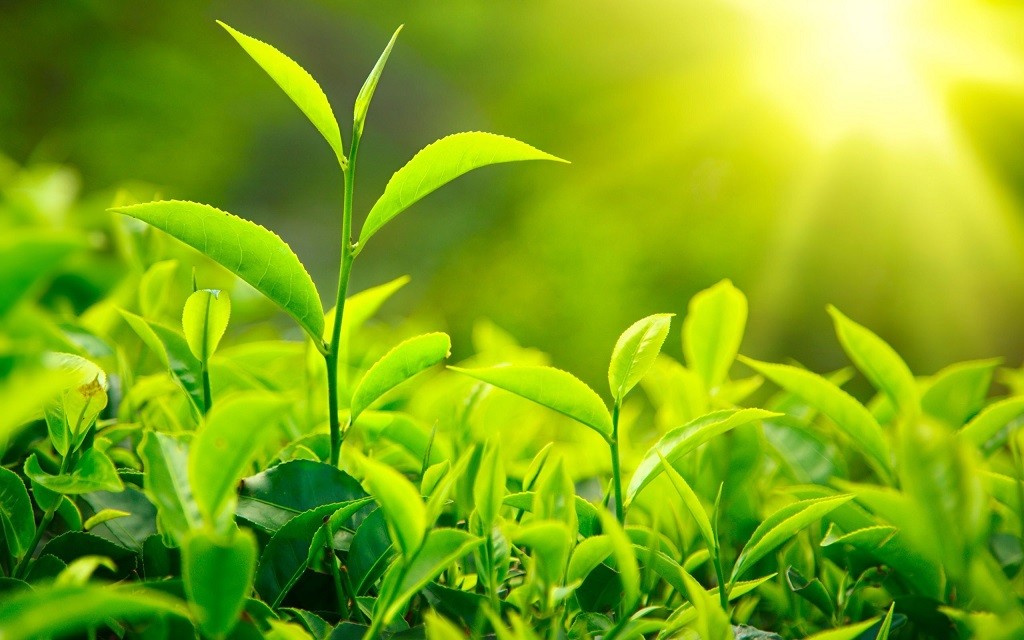The variety of tea types that are available can be somewhat overwhelming. All teas are produced from the leaves and buds of the Camellia sinensis plant, but processing and fermentation methods create separate types of tea with distinct flavors. Different teas offer different health benefits and different tastes, so you can easily find a tea that suits your individual needs. Green-tea and oolong-tea are two of my favorite types of tea. They both have a pleasant and mild taste, and they have a variety of healthy advantages.
Tea Processing
The main difference between different types of teas is that they are processed in divergent manners. The oxidization process is halted at a very early stage in order to make green-tea. Chinese green-teas may be pan-fried and Japanese green-teas may be steamed; this processing step develops flavor and caffeine. Green-teas have a mild, grassy, earthy flavor. Some green-teas are made out of whole, dried leaves, while other types can be green powdered tea, which is whisked into water to make a frothy drink. Oolong-teas are partially fermented, but the fermentation is stopped before it turns into black tea. Oolong-teas taste flowery, buttery, or smoky. Green-tea can look very different, depending on the processing. Oolong-tea is never broken or powdered like green-tea. Instead, oolong-tea leaves are often hand rolled into tiny twists.
Preparation
Many modern grocery stores have an incredible selection of organic teas. My local Whole Foods is one of my favorite places to shop for tea, but you can also find specialty teas in online stores. Once you find a tea supplier, there are many different ways to prepare a tasty drink with oolong-teas and green-teas. To make the perfect green-tea, you should steep your tea leaves for about three minutes in water that is around 180 degrees. Making matcha is a little trickier than just dunking a tea bag into water, but it is definitely worth it. Matcha is made by whisking a small amount of green powdered tea with hot water to create a thick, frothy tea. The ideal water temperature for oolong-tea is around 206 degrees, and you can steep it for three to five minutes. I like that both green and oolong-tea can be served as an iced or hot beverage.

Caffeine Levels
I often like to drink tea instead of coffee because it has less caffeine. Both tea types have enough caffeine to make me feel just a little bit more alert without making me feel jittery. The typical 8 ounce cup of coffee can have up to 200 milligrams of caffeine. In contrast, the same amount of green or oolong-tea has roughly 70 milligrams of caffeine. If you are the type of person who likes to continually sip warm beverages, tea is often a better choice since multiple cups of coffee each day lead to stomach problems. Tea allows you to get just the right amount of caffeine.
Antioxidants
According to a recent study in the Journal of Agricultural and Food Chemistry, many types of tea contain significant levels of polyphenols. Polyphenols are antioxidants that protect the body from oxidants that can harm it. Polyphenols have been shown to decrease risks for heart disease, breast cancer, and endometrial cancer. Catechins are another type of powerful antioxidants that are found in all teas. Catechins protect the brain, so they help to prevent strokes and reduce Alzheimer’s and Parkinson’s symptoms. While antioxidants are higher in green-tea, there is still a decent amount of antioxidants in oolong-tea. The big difference between the two is just because the oxidization process removes antioxidants. You can get all of the same benefits whether you steep whole leaves in hot water or make matcha, a finely powdered green that is blended into water.
Weight Loss
Tea can be a valuable tool if you are interested in losing a couple of pounds. I find that drinking tea helps me to cut back on calorie intake, since it has far less calories than the typical Starbucks frappuccino, even if you add a lot of milk and sugar to your drink. Both types of tea also boosts metabolism, which subtly increases the amount of calories you can eat in a day. A Japanese study has found that oolong-tea specifically helps with weight loss, and it is twice as effective as green-tea. This may be because oolong-tea has more caffeine in it, and caffeine tends to increase a person’s energy expenditure. The catechins found in all types of tea can also be helpful with weight loss, because they aid your body in processing fat.
Do you prefer oolong or green tea? Let us know in the comment section.



I am a fan of both green and oolong but have a special affinity for Oolong since visiting tea gardens in the Darjeeling region of India.
Wasn’t aware that tea helps prevents Alzhemier’s and aids in weight loss. BTW which is your favorite tea?
Hi Ashley! Our favorite is definitely matcha! If you’re looking for a weight loss aid, matcha is a great option! Check out our matcha articles 🙂
Be careful drinking oolong tea while taking Verapamil. I had a lot of bleeding and bruising in my legs. I read about the side affects and the article mentioned a negative interaction weight these two products. I quit the tea and the bruising has gone. I miss the tea though. Any suggestions on a good substitute? It was great for digestion issues.
Hi Sue. Thanks for your comment. In this case we really suggest that you contact your doctor before testing out any news teas.
I have read on a bunch of websites including live strong.com that green tea is better for weight management or help?
Yes, definitely. Green Tea contains a compound called ECGC, which increases metabolism. Here’s an article that we wrote that goes into detail about why Green Tea aids in fat loss/weight management.
We would argue the same thing based on our research! Check out some of our various matcha weightloss blog posts like this one: https://www.matchasecrets.com/category/green-tea-weight-loss/
It really is Lauren! Definitely true matcha green tea to help with your weightloss goals.
Oolong tea..i just started drinking ds tea. Awesome taste n smell. Im hopping to reduce my weight soon
That’s excellent. Would you consider trying matcha for weight loss?